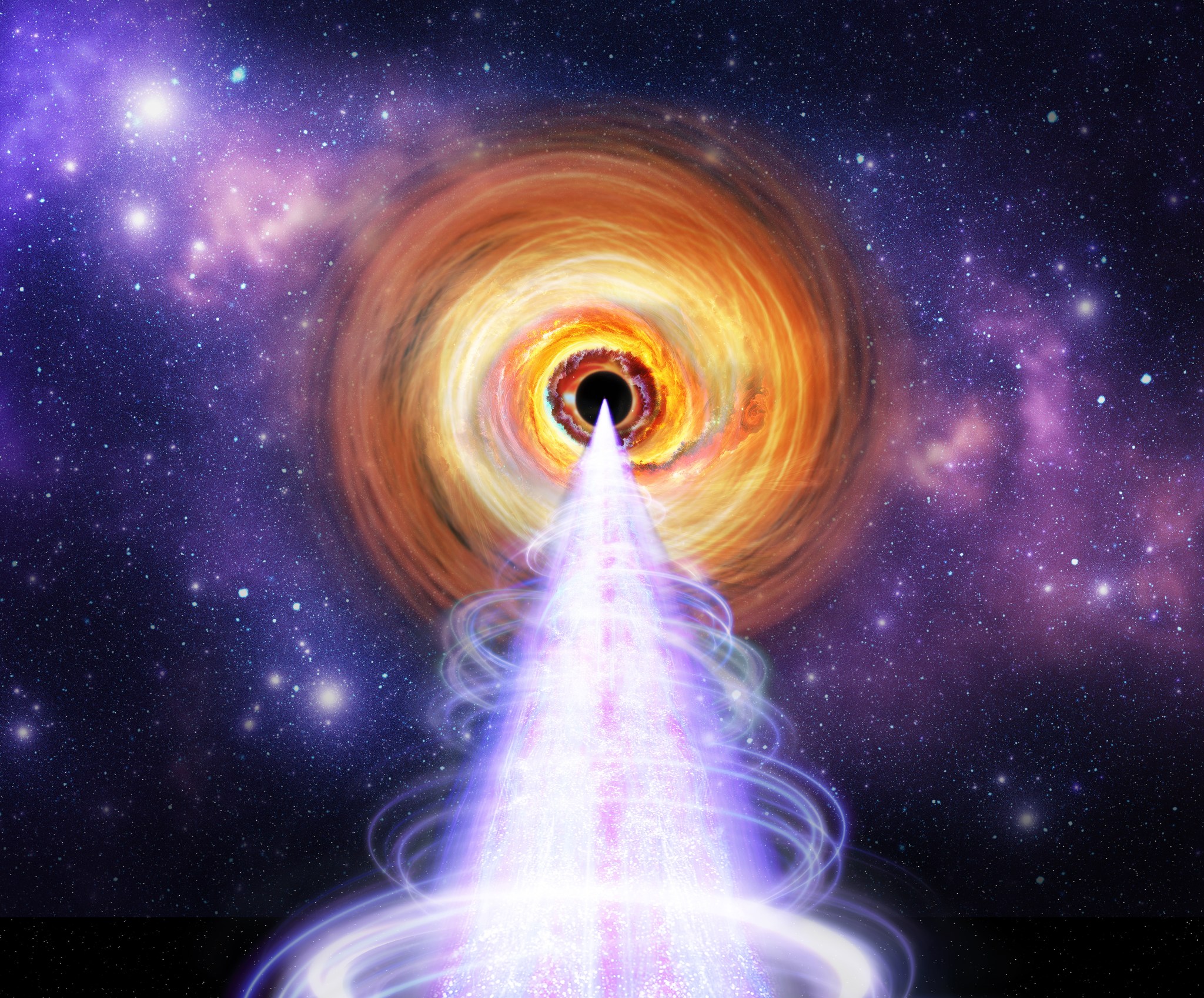2025-05-06 NASA

NASA/Pablo Garcia
<関連情報>
- https://www.nasa.gov/missions/ixpe/nasas-ixpe-reveals-x-ray-generating-particles-in-black-hole-jets/
- https://arxiv.org/abs/2505.01832
BLラセルタエのジェットにおけるコンプトン散乱が、高い光学偏光/X線偏光比で明らかになった High optical to X-ray polarization ratio reveals Compton scattering in BL Lacertae’s jet
Ivan Agudo, Ioannis Liodakis, Jorge Otero-Santos, Riccardo Middei, Alan Marscher, Svetlana Jorstad, Haocheng Zhang, Hui Li, Laura Di Gesu, Roger W. Romani, Dawoon E. Kim, Francesco Fenu, Herman L. Marshall, Luigi Pacciani, Juan Escudero Pedrosa, Francisco Jose Aceituno, Beatriz Agis-Gonzalez, Giacomo Bonnoli, Victor Casanova, Daniel Morcuende, Vilppu Piirola, Alfredo Sota, Pouya M. Kouch, Elina Lindfors, Callum McCall, Helen E. Jermak, Iain A. Steele, George A. Borman, Tatiana S. Grishina, Vladimir A. Hagen-Thorn, Evgenia N. Kopatskaya, Elena G. Larionova, Daria A. Morozova, Sergey S. Savchenko, Ekaterina V. Shishkina, Ivan S. Troitskiy, Yulia V. Troitskaya, Andrey A. Vasilyev, Alexey V. Zhovtan, Ioannis Myserlis, Mark Gurwell, Garrett Keating, Ramprasad Rao, Sincheol Kang, Sang-Sung Lee, Sanghyun Kim, Whee Yeon Cheong, Hyeon-Woo Jeong, Emmanouil Angelakis, Alexander Kraus, Dmitry Blinov, Siddharth Maharana, Rumen Bachev, Jenni Jormanainen, Kari Nilsson, Vandad Fallah Ramazani, Carolina Casadio, Antonio Fuentes, Efthalia Traianou, Clemens Thum, Jose L. Gomez, Lucio Angelo Antonelli, Matteo Bachetti, Luca Baldini, Wayne H. Baumgartner, Ronaldo Bellazzini, Stefano Bianchi, Stephen D. Bongiorno, Raffaella Bonino, Alessandro Brez, Niccolo Bucciantini, Fiamma Capitanio, Simone Castellano, Elisabetta Cavazzuti, Chien-Ting Chen, Stefano Ciprini, Enrico Costa, Alessandra De Rosa, Ettore Del Monte, Niccolo Di Lalla, Alessandro Di Marco, Immacolata Donnarumma, Victor Doroshenko, Michal Dovciak, Steven R. Ehlert, Teruaki Enoto, Yuri Evangelista, Sergio Fabiani, Riccardo Ferrazzoli, Javier A. Garcia, Shuichi Gunji, Kiyoshi Hayashida, Jeremy Heyl, Wataru Iwakiri, Philip Kaaret, Vladimir Karas, Fabian Kislat, Takao Kitaguchi, Jeffery J. Kolodziejczak, Henric Krawczynski et al. (50 additional authors not shown)
arXiv Submitted on 3 May 2025
DOI:https://doi.org/10.48550/arXiv.2505.01832
Abstract
Blazars, supermassive black hole systems (SMBHs) with highly relativistic jets aligned with the line of sight, are the most powerful long-lived emitters of electromagnetic emission in the Universe. We report here on a radio to gamma-ray multiwavelength campaign on the blazar BL Lacertae with unprecedented polarimetric coverage from radio to X-ray wavelengths. The observations caught an extraordinary event on 2023 November 10-18, when the degree of linear polarization of optical synchrotron radiation reached a record value of 47.5%. In stark contrast, the Imaging X-ray Polarimetry Explorer (IXPE) found that the X-ray (Compton scattering or hadron-induced) emission was polarized at less than 7.4% (3sigma confidence level). We argue here that this observational result rules out a hadronic origin of the high energy emission, and strongly favors a leptonic (Compton scattering) origin, thereby breaking the degeneracy between hadronic and leptonic emission models for BL Lacertae and demonstrating the power of multiwavelength polarimetry to address this question. Furthermore, the multiwavelength flux and polarization variability, featuring an extremely prominent rise and decay of the optical polarization degree, is interpreted for the first time by the relaxation of a magnetic “spring” embedded in the newly injected plasma. This suggests that the plasma jet can maintain a predominant toroidal magnetic field component parsecs away from the central engine.



